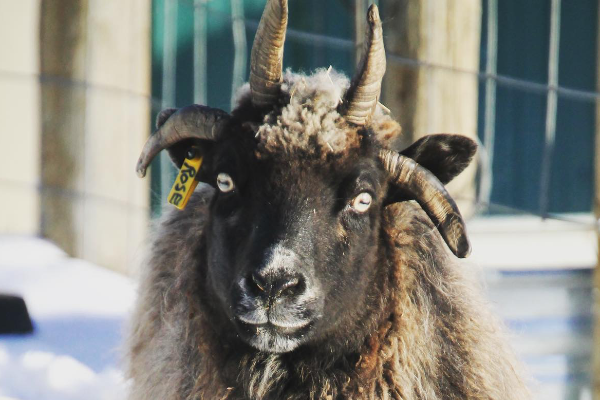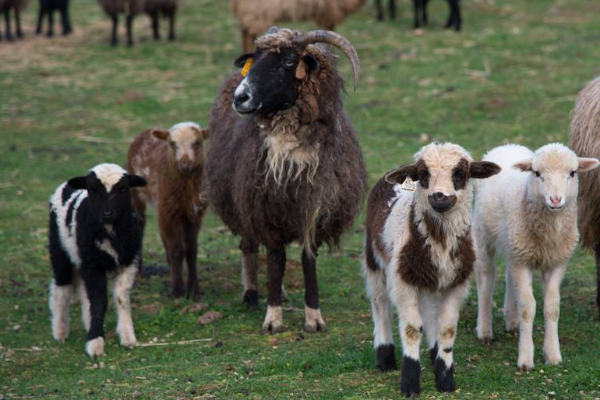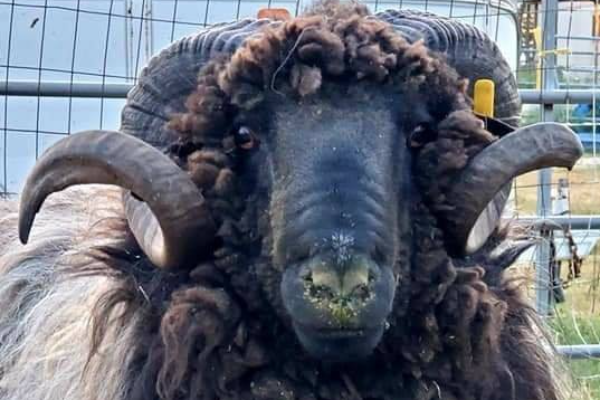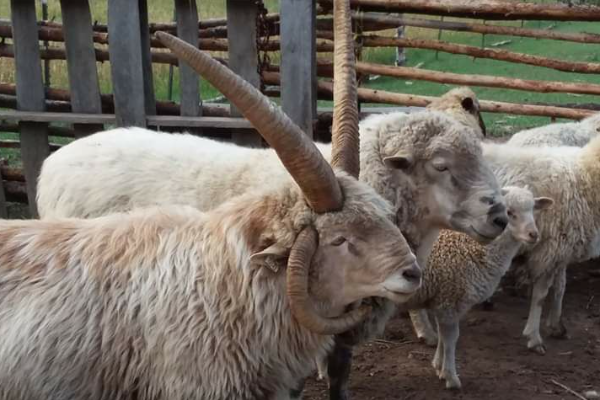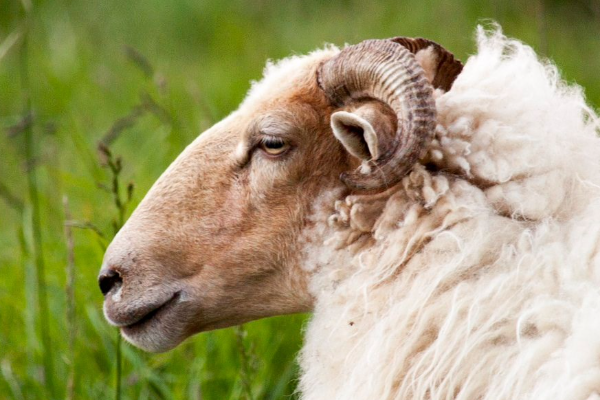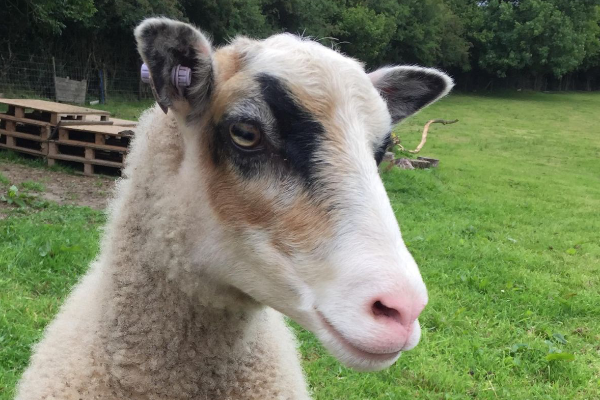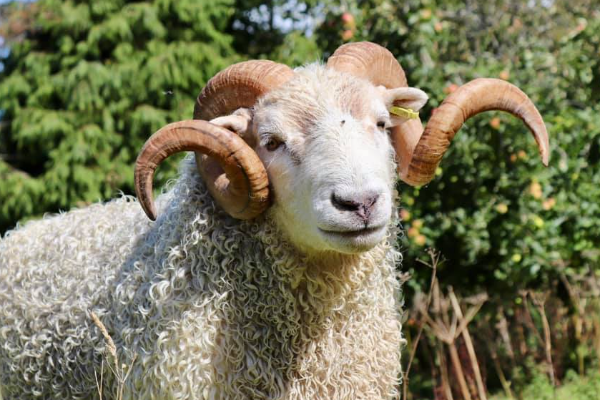Navajo-Churro Sheep
What is the history of Navajo-Churro Sheep?
The Navajo-Churro sheep comes from Churra, an ancient Iberian breed. Despite the secondary Merino, Churra (later corrupted for "Churro" by the American frontier) was remarkably valued by the Spaniards for endurance, adaptability, and fertilityChurra was the first domesticated breed of sheep in the New World. Its import into New Spain by the Spanish dates back to the 16th century when it was used by conquistadors and Spanish settlers to feed and clothe their armies.
In the 17th century, Churro became the mainstay of Spanish farms and villages above the Rio Grande Valley.
Native Indians purchased Churro herds for food and fiber through raids and trade. Within the century, herding and weaving became an important economic asset for the Navajo.
The first Rio Grande, Pueblo and Navajo textiles were made from Churro wool, a fleece weaving admired by collectors for its luster, silky touch, natural color variety and durability.
As early as 1789, the Spaniards controlled sheep exports from the New Mexico states to preserve their breeding stock. But in the 1850s, thousands of Churros retreated west to secure the California Gold Rush. Most of the remaining Churros of Hispanic farms were crossed with fine wool coaches to meet the growing population and the demand for clothing wool caused by the Civil War.
America's westward expansion in 1865 collided with Navajo resistance. Tragically, Kit Carson and his troops were ordered to relocate the tribe and destroy their animals. Much blood was shed, and in 1865, about 9,000 Navajos were forced into a concentration camp in Bosque Redondo, New Mexico, on the 300-mile Long Hike. The terrible conditions here caused the deaths of many people and their animals. Some Navajos survived capture and hid with their sheep in the remote canyons of New Mexico and Arizona. Three years later, the Navajos returned to their homeland and two "native" sheep were given per capita from Hispanic herds.
In the 1900s, further "improvements" and stock reductions were implemented on Navajo herds by US agencies. Real survivors would only be found in isolated villages in northern New Mexico and in remote canyons of the Navajo Indian Reserve. Eventually the Navajos were allowed to return to their ancestral lands from which they built their herds back. That is, until government agents returned in the 1930s with an order to eliminate Churro. "The US government thought there were too many sheep and the wrong sheep", the reason the government stated was about the environment. Killing Churro brought the Navajo economy to a tail point. Realizing that the tribe could not live without their herds, the government introduced standard breeds whose meat and wool were more uniform than market demand.
In the 1970s, few people began to acquire Churro phenotypes in an effort to preserve the breed and revive Navajo and Hispanic herds. The criteria for the breed were established from data collected over three decades (1936-1966) by the Southwestern Range and Sheep Breeding Laboratory in Fort Wingate, New Mexico. Several flocks have developed and the Navajo Sheep Project has initiated joint breeding programs in some Navajo and Hispanic herds.
What are the characteristics of Navajo-Churro Sheep?
- These Navajo-Churro Sheeps are well suited to extreme climatic conditions with their long fiber protective top coat and soft undercoat.
- Navajo-Churro is highly resistant to disease and although it responds to individual attention, there is no need to be pampered to survive and thrive.
- Sheep lamb easily and are extremely protective.
- Twins and triplets are not uncommon.
- The taste of the meat is incomparably superior to its surprisingly low fat content.
- Some coaches have four fully developed horns, a trait shared with several other breeds around the world.
- Navajo-Churro rams may have two, four, six or more horns. This is because they have the polykerate gene, which is also found in older heritage breeds such as the Jacob Sheep.
- They also have the ability to fuse horns.
- Navajo-Churro sheep may also have horns or tubers called scurs. Color can be black, white or striped.
- The growth of ram horns is slow.
- It takes at least four to five years for a full rack to grow.
- A sheep horn can also grow, but not as large as rams.
- Horns are usually curved forward and should not be close to the face, but away.
- Horn quality is crucial to obtaining good genetics in a herd; The bad horns on
- the father will continue towards his offspring.
- Horns can break and bleed as they live at their base.
- Churros come in a variety of colors, including reds, browns, black, white, and mixes, and color can change with age.
- Color is divided into fleece color and spot color (legs and head).
- Navajo-Churro sheep can also have different color patterns such as eye patches and hip spots.
What is the weight of mature Navajo-Churro Sheep?
Mature Navajo-Churro sheep weigh around 40 - 50 kg.
Mature Navajo-Churro rams weigh around 50 - 75 kg.
Pictures:
Garden Barn https://www.facebook.com/gardenbarnmt/
Dot Ranch Navajo-Churro Sheep and Heritage Poultry
Kirk Hill - New Mexico

Written by
H Cetin KATIRCI
Online ShepherdBreedsMore
IllnessesMore
Forage cropsMore
![]() Патологическая физиология голодания Arina TARAN
Патологическая физиология голодания Arina TARAN![]() Дефицит фосфора (гипофосфатемия) Hipofosfatemi Arina TARAN
Дефицит фосфора (гипофосфатемия) Hipofosfatemi Arina TARAN![]() Какие бывают кормораздатчики для ферм КРС? Irina Makarova
Какие бывают кормораздатчики для ферм КРС? Irina Makarova![]() Кормушки для овец Diana Myakisheva
Кормушки для овец Diana Myakisheva![]() Питание домашних коз: что едят, виды корма и правила кормления Alina Arslantürk
Питание домашних коз: что едят, виды корма и правила кормления Alina Arslantürk![]() Важность минералов питании сельскохозяйственных животных Irina Makarova
Важность минералов питании сельскохозяйственных животных Irina Makarova

